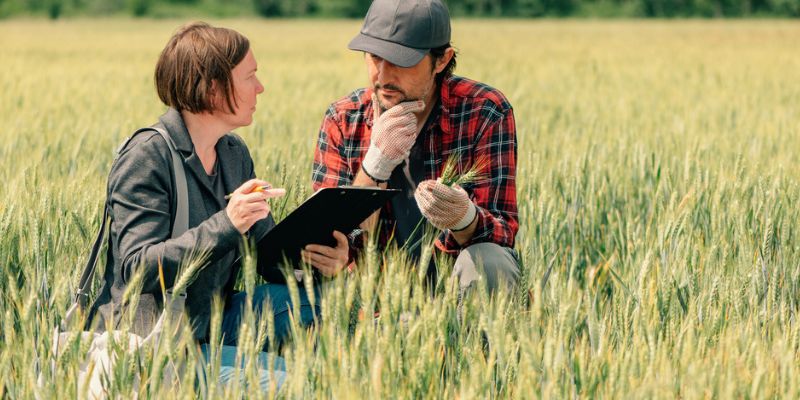Starting a farm is an exciting adventure, but it often comes with significant upfront costs. For many new farmers, accessing capital is essential to launching and maintaining operations. This is where first time farm loans are critical to financing farming resources, by covering land purchases, machinery, operating expenses, and more. However, navigating the loan process for the first time can feel daunting. Over 70% of farm loan applications face delays due to missing or incorrect paperwork.
This guide will walk you through how to apply for a farm loan and offer tips on how to get approved on your first attempt, so you can focus on growing your agricultural dream.

Types of Farm Loans and Programs
Farm Ownership Loans
Used to purchase farmland or improve farm property. These loans help new farmers acquire their first farm or expand their land.
Farm Operating Loans
Operating loans provide working capital for day-to-day expenses like seed, feed, fertilizer, or utilities. They help cover recurring costs and keep the farm running when cash flow is tight.
Equipment Loans
If you need tractors, irrigation systems, or other machinery, equipment loans can finance those.
Lines of Credit
A revolving credit line you can draw from as needed to manage cash flow. Lines of credit help cover short-term needs in seasonal farming cycles when expenses come before income.
Beginning Farmer Programs
Government programs are designed for first-time farmers. For instance, the USDA FSA’s Beginning Farmer and Rancher program targets a portion of its funds specifically for new farmers, and a special Down Payment loan lets new farmers buy a farm with only 5%.

How to Apply for a Farm Loan
1. Assess Your Needs and Qualifications
Determine what you need financing for and how much. Are you buying land and equipment, or are you covering operating costs? Clarify the loan’s purpose and amount, and ensure it aligns with a realistic farm budget. At the same time, consider your qualifications, such as your farming experience, credit score, income, and assets.
2. Prepare a Farm Business Plan
A solid business plan is the cornerstone of your loan application. It shows lenders how you will use the money and how your farm will generate income to repay the loan. Your plan should clearly outline your farm’s concept, target market, operations plan, and financial projections.
Writing a detailed plan forces you to think through your venture and gives the lender confidence that you have a roadmap for success. Many lenders won’t consider a farm loan application without a business plan attached.
3. Gather Your Financial Documents
Be prepared to provide a complete picture of your financial farming. Standard documents you’ll need to include:
- Tax returns (last 2–3 years, personal/business)
- Financial statements (balance sheet of assets and debts)
- Income/expense projections or farm budgets
- Collateral documentation (deeds or titles for assets offered)
- Credit report (you can include a recent report for reference)
4. Research Lenders and Shop Around
Not all lenders are the same, so it pays to shop around. Make sure to compare interest rates, loan terms, and fees. Some may offer better rates but stricter requirements, while others might be more flexible. Compare loan offers on key factors like interest rate, repayment schedule, and fees.
Don’t hesitate to ask questions and discuss tailored options with a specialized lender like Janus AG Finance.
5. Submit a Complete Application
Ensure you provide all accurate information and attach all required documents before you submit. After applying, be responsive to the lender’s questions or requests for additional information.
Prompt, professional communication helps demonstrate that you’re a serious borrower and keeps the process on track.

Tips to Get Approved for Your First Farm Loan
- Boost Your Credit Profile: Your credit score plays a significant role in loan approval and the interest rate you get. Before applying, check your credit report. Pay down high balances, fix any errors, and avoid taking on new debt. A higher credit score can lead to better loan terms.
- Offer a Down Payment or Collateral: Your application will be stronger if you can put some money down (even 5-10%) or offer collateral such as other property or equipment. For example, the FSA’s beginning farmer down payment program requires only 5% down, but showing that you have even a small down payment or equity stake signals your commitment to the project.
Finally, keep in mind that persistence pays off. Ask the lender for feedback if you don’t get approved on the first try. You might need to address a specific issue and reapply. Many successful farmers face a few rejections before securing their first loan. You can eventually get the financing you need by learning from the process and showing improvement.
Ready to Finance Your Farm?
With over 30 years of experience in agricultural lending, Janus AG Finance understands the unique challenges that first time farm loans face. Our team of experts will guide you through every stage of the farm loan process, from choosing the right loan product to preparing your application, ensuring you have the best chance of approval.
We pride ourselves on a personal, hands-on approach and competitive loan options tailored to farms and ranches of all sizes. Whether you need a farm ownership loan, an operating line of credit, or advice on leveraging beginning farmer loan programs, we’re here to help. We aim to help you secure the funding you need to grow your operation, without unnecessary hassle or delays.

